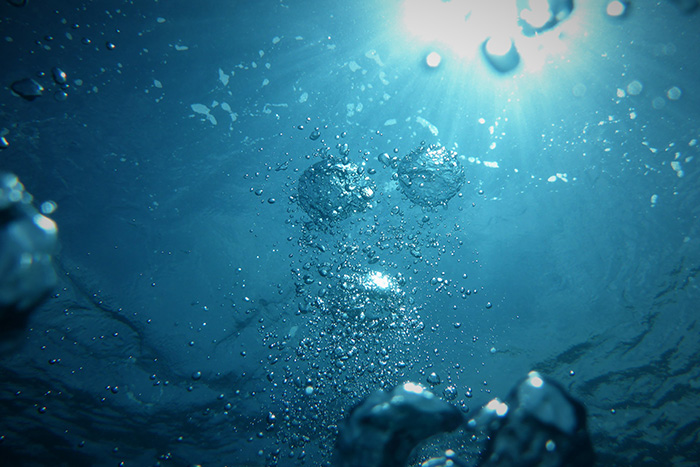We are honored to introduce Ede Kossari Tarnik to the Green Deal platform! Project “Deep SEE” aims to characterize the microplastic pollution of the Maltese nearshore waters from an innovative perspective by targeting to shed more light on the dynamics of microplastic accumulation within the water column around the Maltese Islands. This pioneering survey in fact examines different sea layers to determine whether different plastic polymers accumulate with increasing water depth.
This research project has been made possible through a joint collaboration between the University of Malta, Oceanography Malta Research Group (Prof Alan Deidun, Dr Adam Gauci, Ede Kossari Tarnik MSc Geoscience by Research), Zibel, Environmental NGO (Andrew Schembri, Arkadiusz Srebnik), Nora Kovats and Michael Bonello (DUTCH) creative contributors and Eurofins Analytical Services Hungary Ltd. (Dr Gábor Bordós, Bence Prikler). The same research has been part-supported by the Elisabeth Mann Borgese Bursary of the International Ocean Institute which has been awarded to Ede Kossari Tarnik for 2022-23.

Introduction
The definition of microplastics (MPs) is not completely straightforward, representing a diverse range of synthetic material types, shapes, colours, and sizes. The term refers to a range of sizes (smaller than 5mm, which corresponds to the smallest pearl used in jewellery) of plastic fragments originating from waste that is released directly into the environment and/or is directly degraded within the marine environment itself. Microplastics enter the environment in several ways, primarily from surface run-off and wastewater effluent, but also from combined sewage outflows, industrial effluents, degraded plastic waste or atmospheric deposition. Microplastics are receiving extensive scientific attention, especially since they have been recorded within all the various compartments of the biosphere; however, the lack of standard methods for sampling and analysing MPs means that comparisons across studies are not representative or difficult in certain cases.
According to published studies on plastic waste, as much as 99% of the plastics in the sea are thought to be MPs[1] and their ingestion by trophic fauna has been widely evidenced because of hazard consequences on organisms and marine ecosystems. Microplastics are not only present in water nature, but MPs have also been detected in the fresh Antarctic snow[2] which shows MPs are currently transported all across the globe. 2022 has been a sinister year across the world with regards to milestones in the research of MPs. During a survey, 80% of the tested volunteers were detected to have MPs in their blood.[3] This means that not only the environment is at risk. Pollution can also reach humans.
Sampling
Project Deep See has a completely different pioneer perspective to discover how the level of pollution could be distributed in different depths of the sea. For that reason, our technical support team (Zibel) has identified a possible modification on the set up of the Manta-net (50μm mesh size). The new technique allows stable sample collection at certain depths (with no physical limit), without losing representativity. We executed horizontal tow sampling by maintaining the Manta net at a stable depth (6 ±1m and 10 ±1m) in a parallel position, by setting up the perfect balance between the weighting of the frame of the Manta net and the speed of the tugboat to keep the net tight.
In parallel, we have collected surface MP samples too, at the same locations, as references to be able to compare surface MP abundances and composition with mid-water ones in the same area. During the mid-water sampling, water was filtered through the Manta net as at the surface, and this was monitored through the flow meter attached to the net; the preservation of the collected samples was ensured by closing off the cod-end (part of the Manta-net where the sample is collected) once the collection time has expired.
We chose two areas where to test the pioneering methodology: one impact site, which is subject to a sewage outfall, at Xgħajra, located off the south-eastern coast of Malta and a control site at (Selmun), located off the north-eastern coast of Malta.
Highlights
The focus of our research was on the examined lower size range, as the larger pieces were typically not found in the water column samples but rather, almost exclusively in the surface samples; hence, the comparison was out of scope. Most of the 1000-5000μm range particles were made of PE (polyethylene) and PP (polypropylene), with results being shown in Table 1.
Overall, the most abundant polymers recorded in the study were the following:
- Acrylic polymers (42.9%) that are frequently used for lighting, electronics screen, automotive components, and outdoor glazing in architecture and construction;
- PE-Polyethylene (17.3%)that are the most commonly-used plastic all over the world mainly as packaging material;
- PP-Polypropylene (15.7%)that is used in a wide variety of applications such as packaging, automotive parts, fibers, and textiles;
- PS-Polystyrene (10.5%)mainly used as protective packaging (foam) or as plastic containers, bottles, and lids.
The composition of the recorded polymers differed at different locations; however, a number of salient observations could be made about the data acquired.
In Xgħajra, the PP (Polypropylene) level was 12% higher, the PVC (Polyvinyl chloride) level was 3 times higher, and the acrylic level was 5 times higher within the 10 ±1m sub-surface samples than at the surface. In Selmun, the PP (Polypropylene) level was 84% higher, the PE (Polyethylene) level was 4 times higher, and the acrylic level was 14 times higher within the 6±1m sub-surface samples than at the surface.
This phenomenon might be based on an equilibrium state between the size and the density of certain polymers with the linked environmental conditions such as salinity and buoyancy. The most significant difference between the MP pollution levels of the surface waters and those recorded in sub-surface samples was detected in terms of acrylic pollution, especially in terms of the polymer most commonly detected within the survey, which also happens to be the densest polymers. Acrylic polymers, in fact, have the highest density, while PE, PS and PP have considerably lower densities.
To further confirm the representativity of the results obtained, the same surveys will be repeated in the months to come and will include a characterization of the baseline of the linked environmental conditions as well.
[1] Plastic Action Centre (2022) – What is Microplastic?
[2] National Geographic (2019) – Tiny pieces of plastic found in Arctic snow
[3] Environment International (2022) – Discovery and quantification of plastic particle pollution in human blood
Contributor(s)

Ede Kossari Tarnik
Ede Kossari Tarnik , Graduated from Budapest University of Technology and Economics, in chemical engineering, specialized in Environmental technology, deeply in water chemistry. Currently finishing the Master of Science by research with Oceanography Malta Research Group at University of Malta. Currently working for STMicroelectronics (Malta) Ltd. Responsible for the Environmental (ISO14001, ISO14064 , EMAS) and Energy (ISO50001) management systems.






